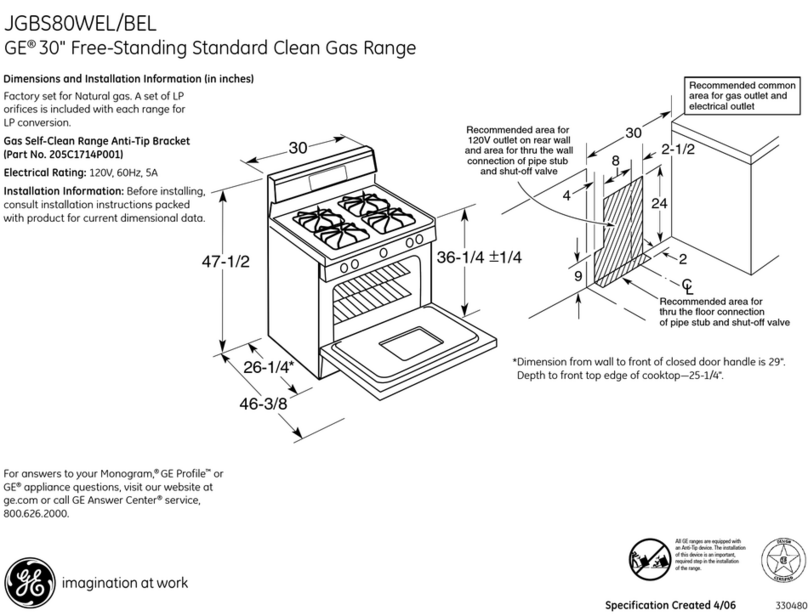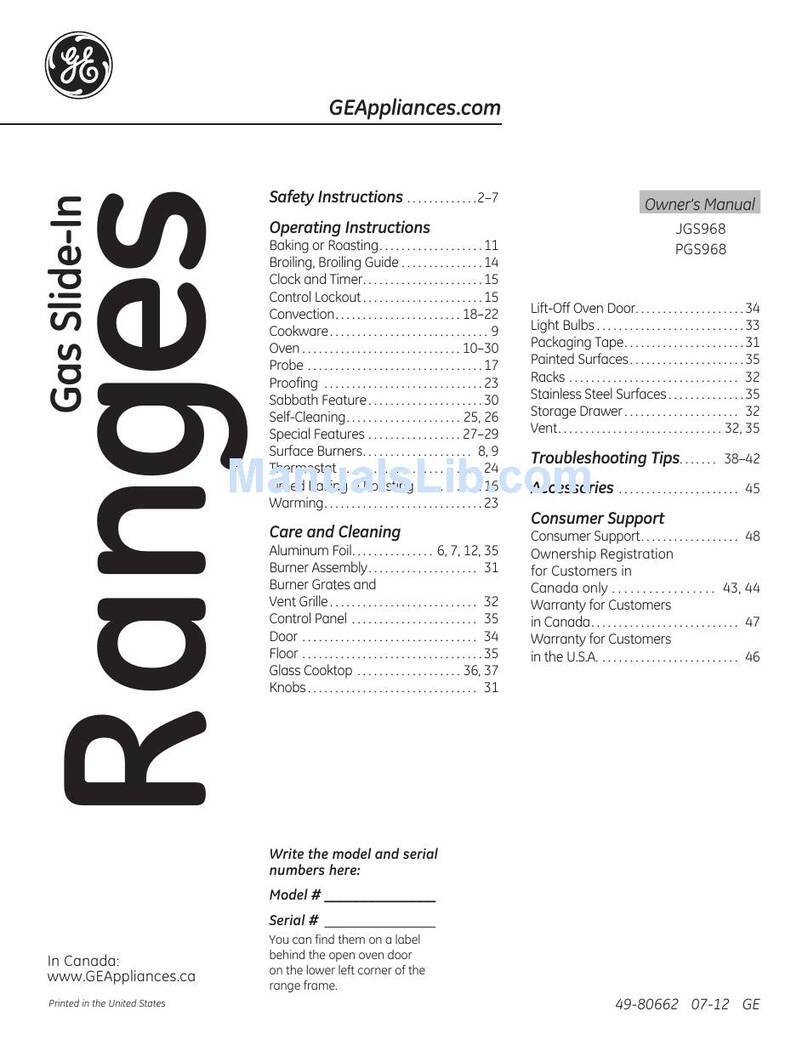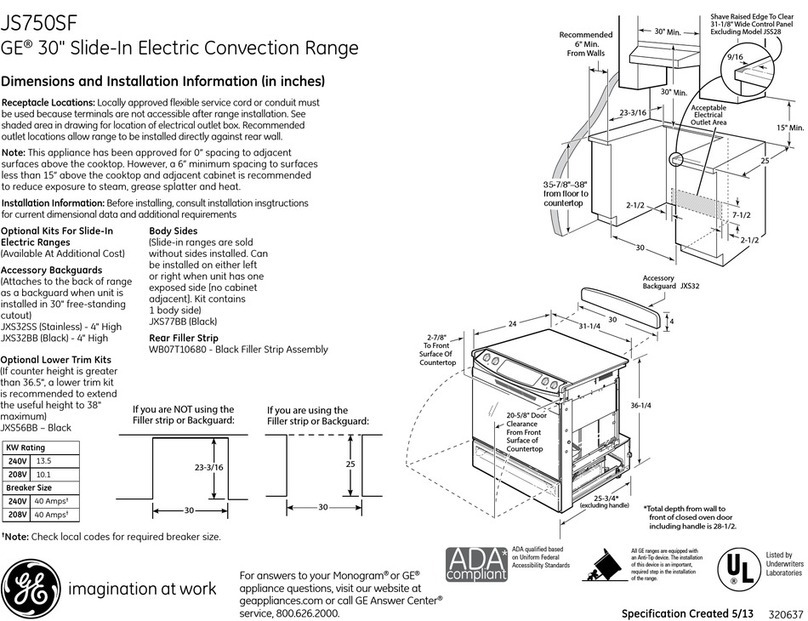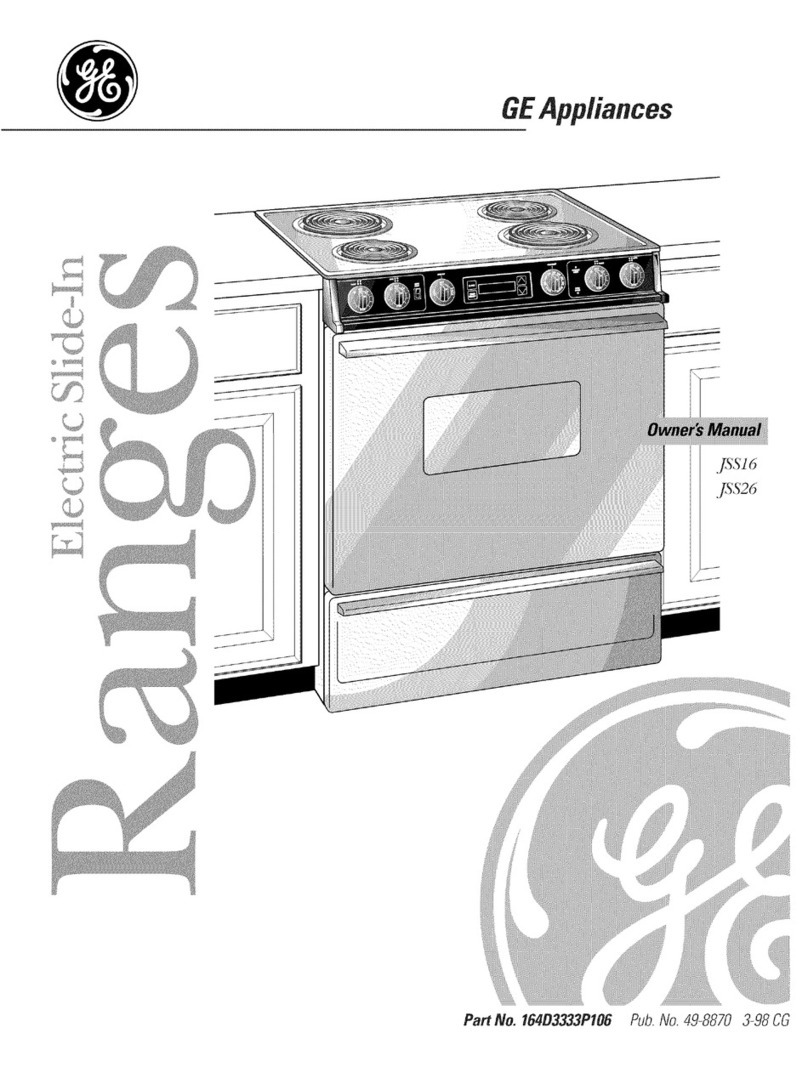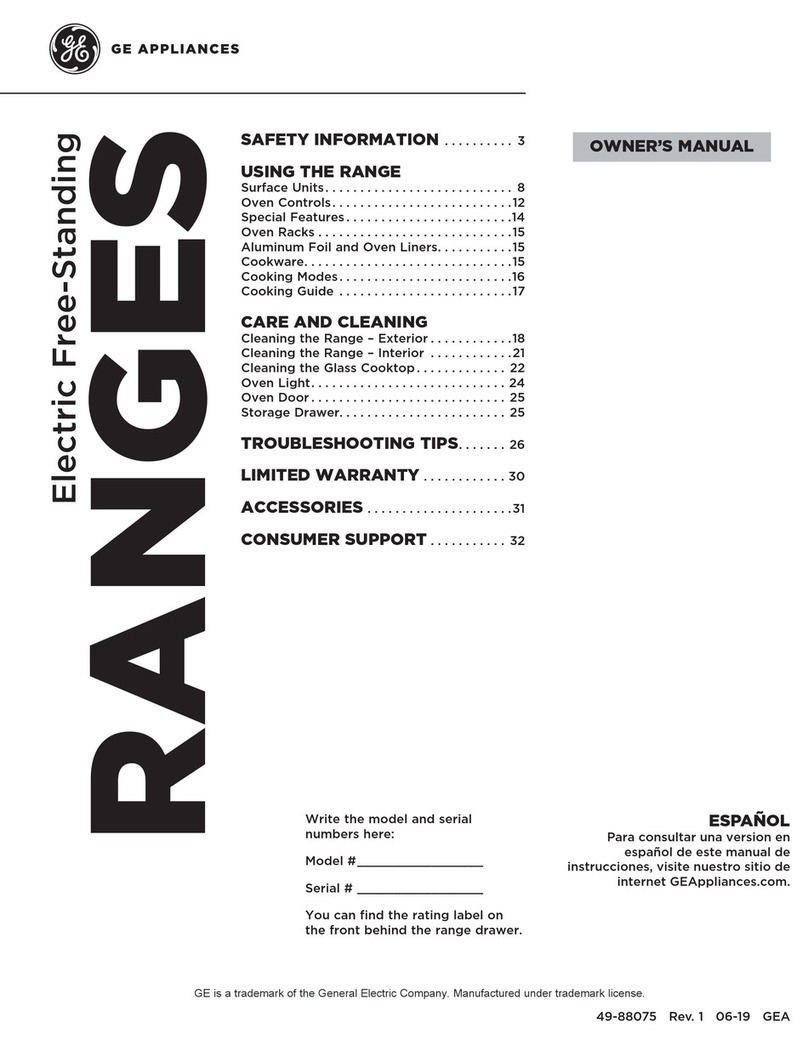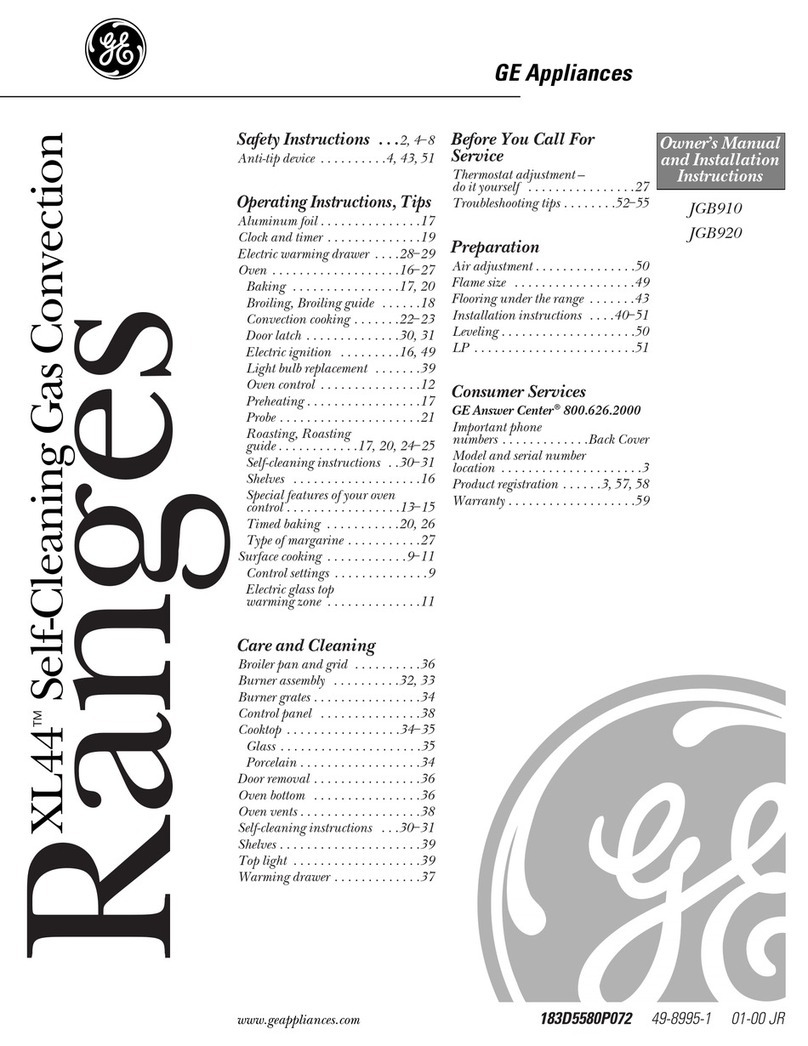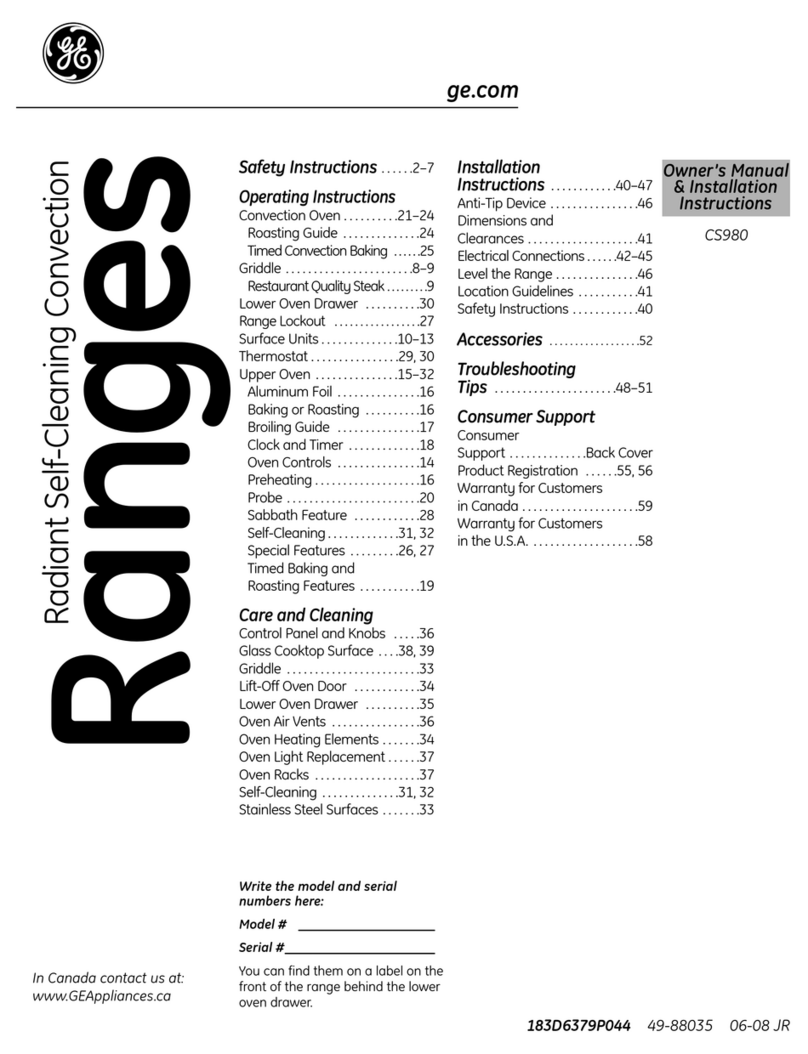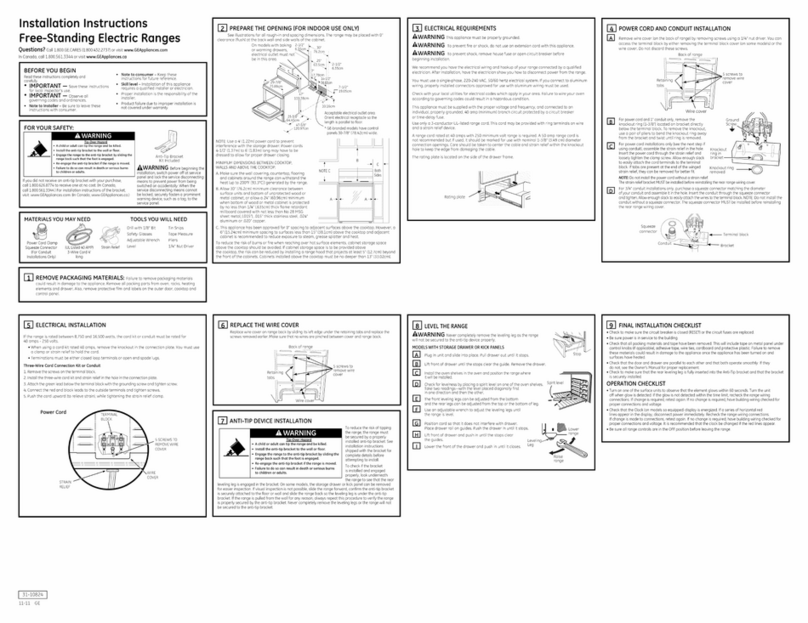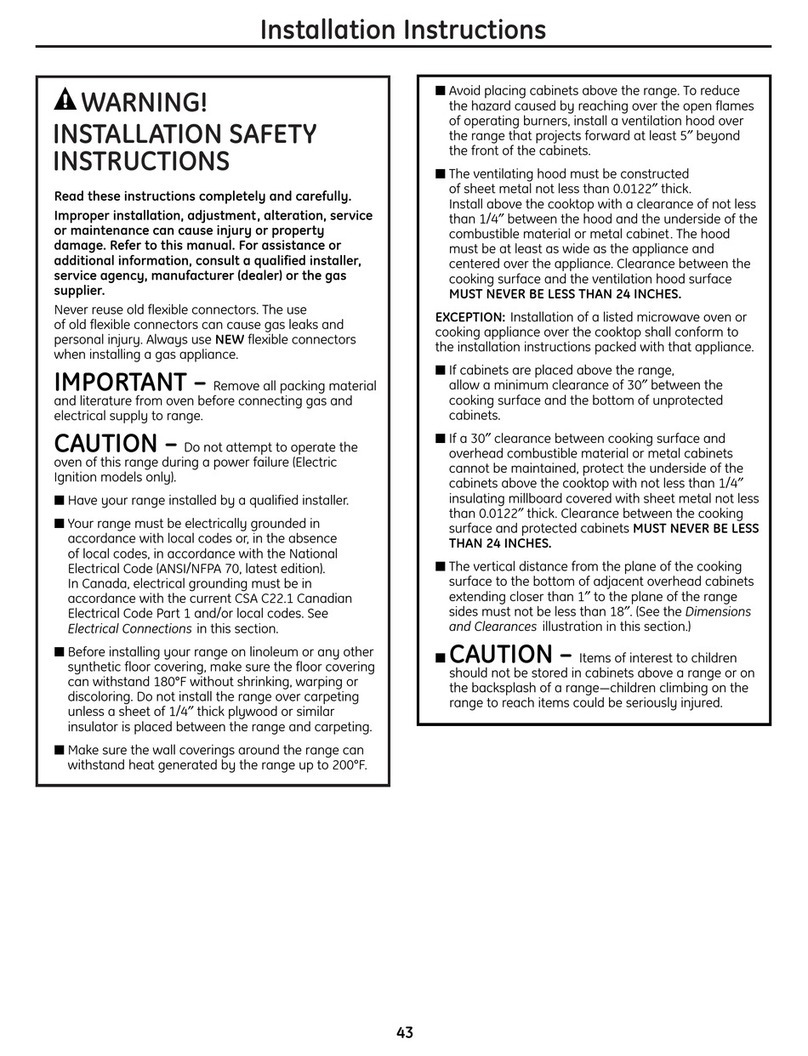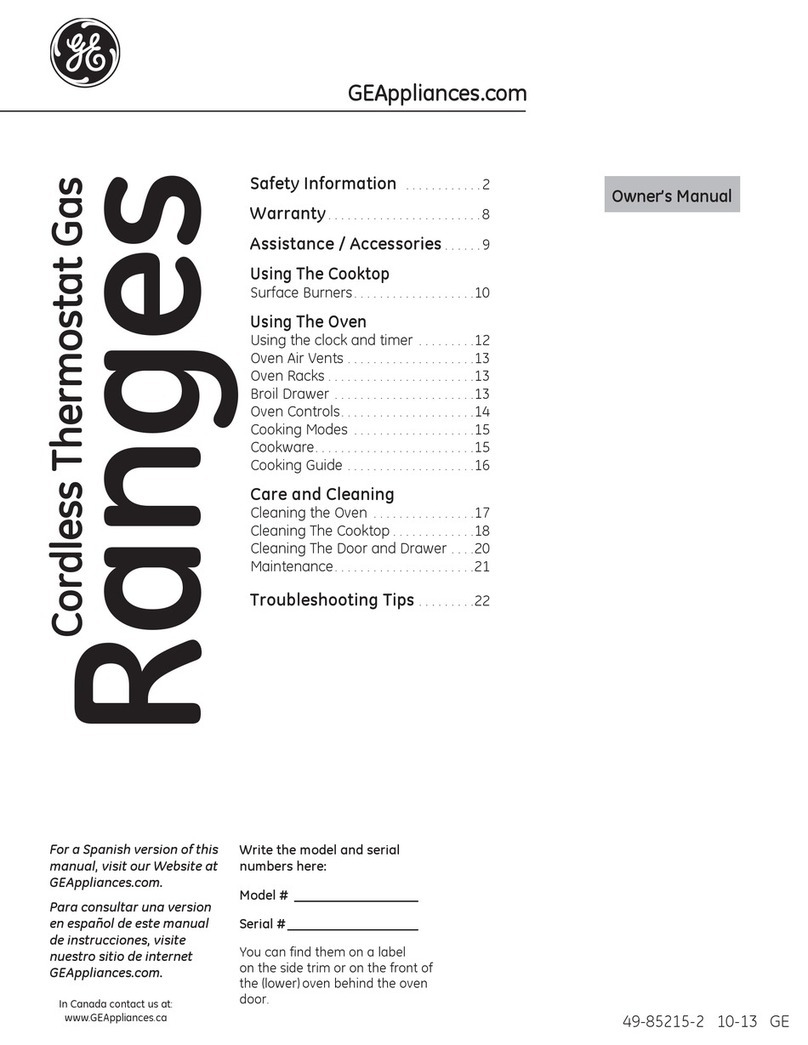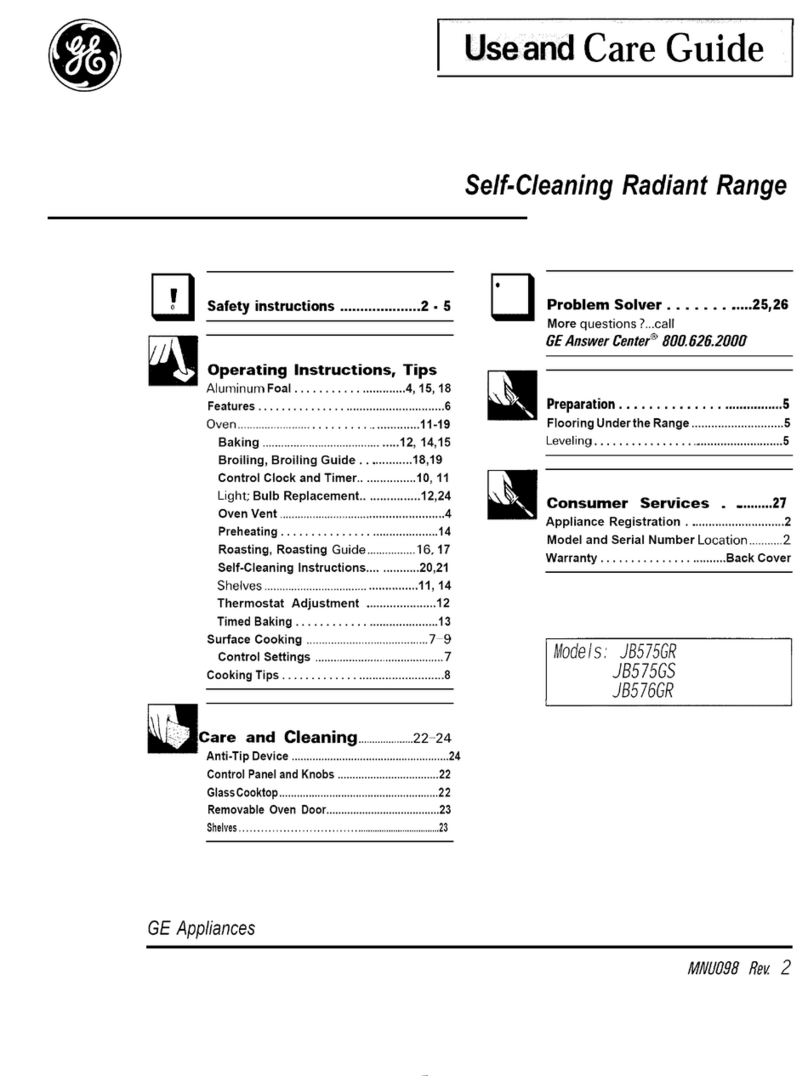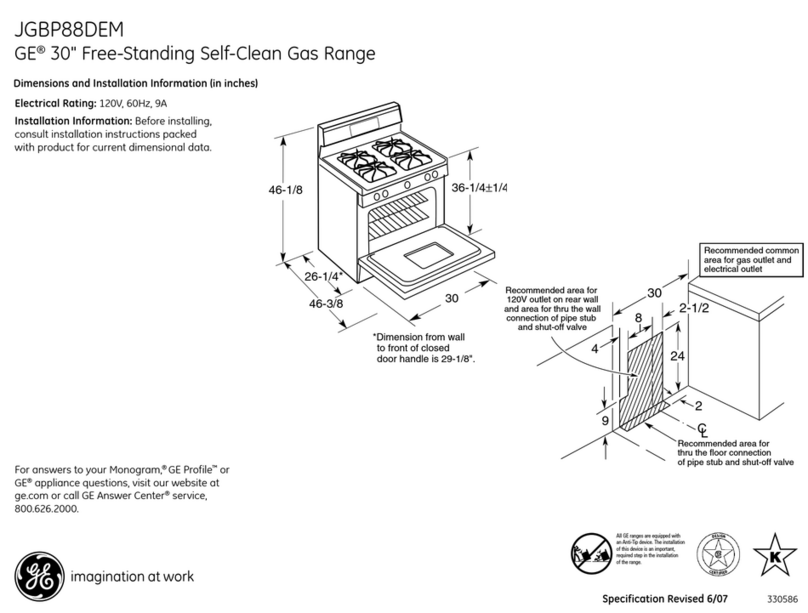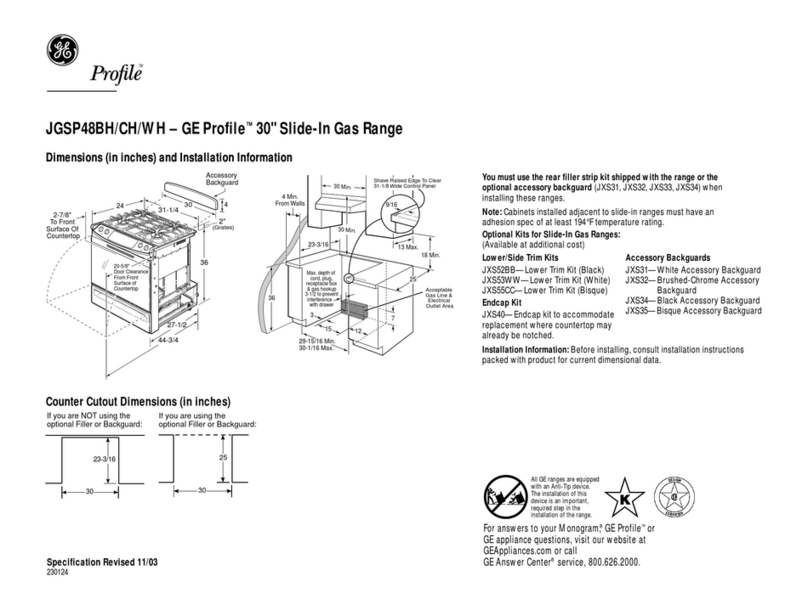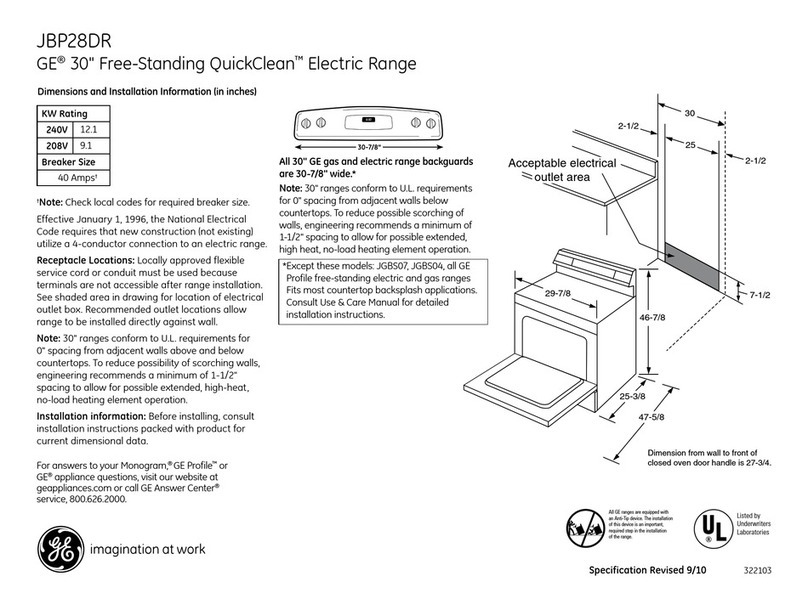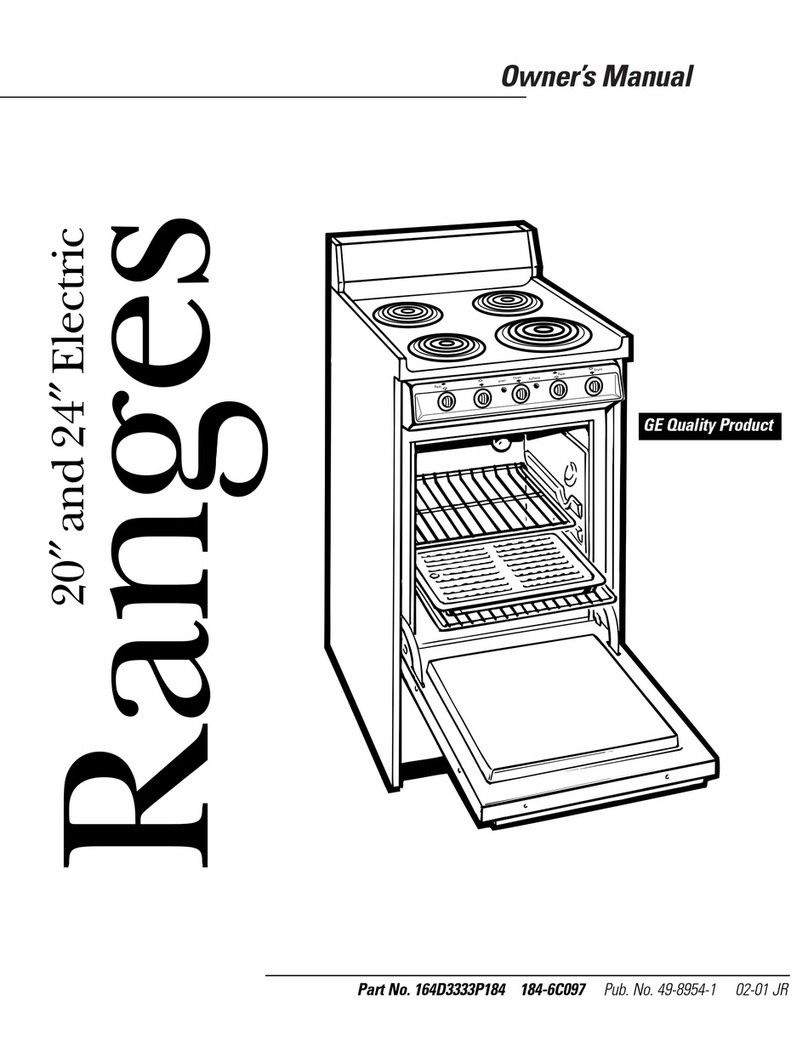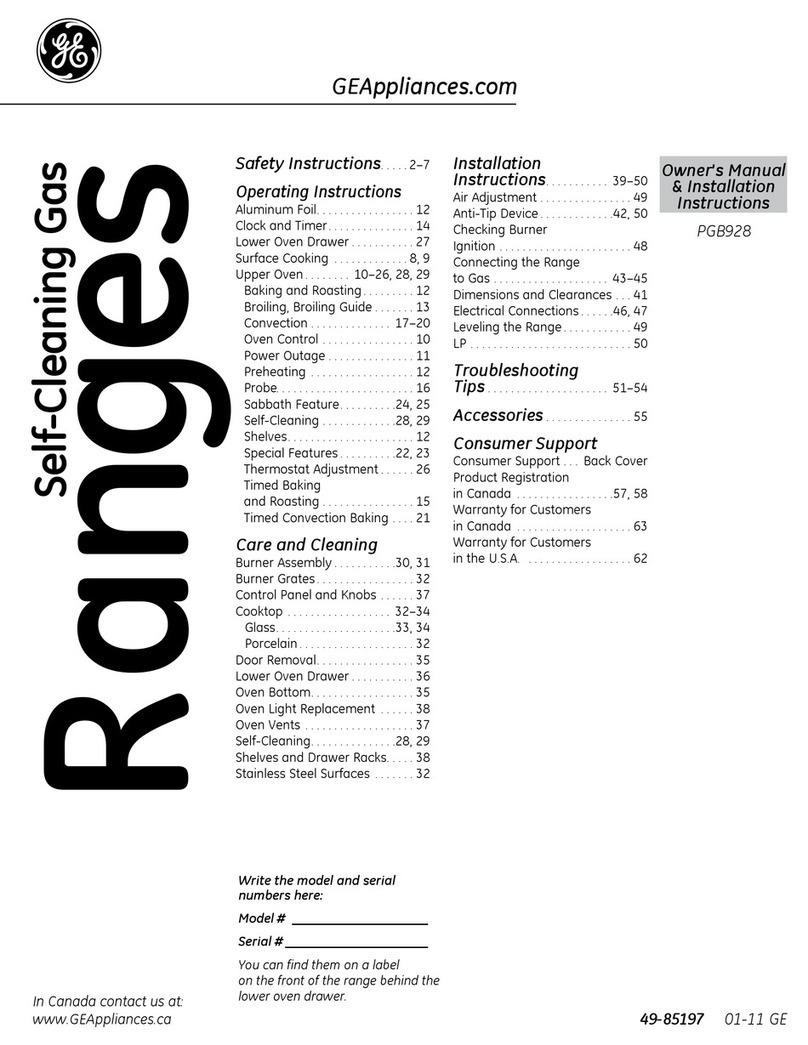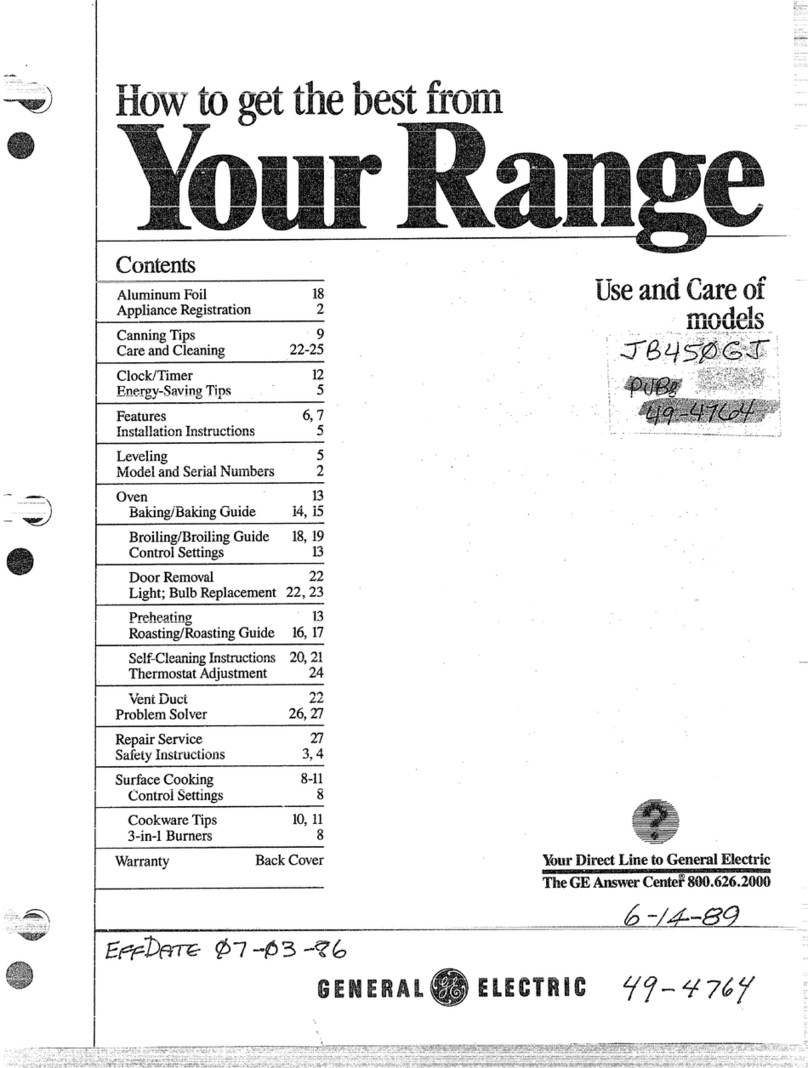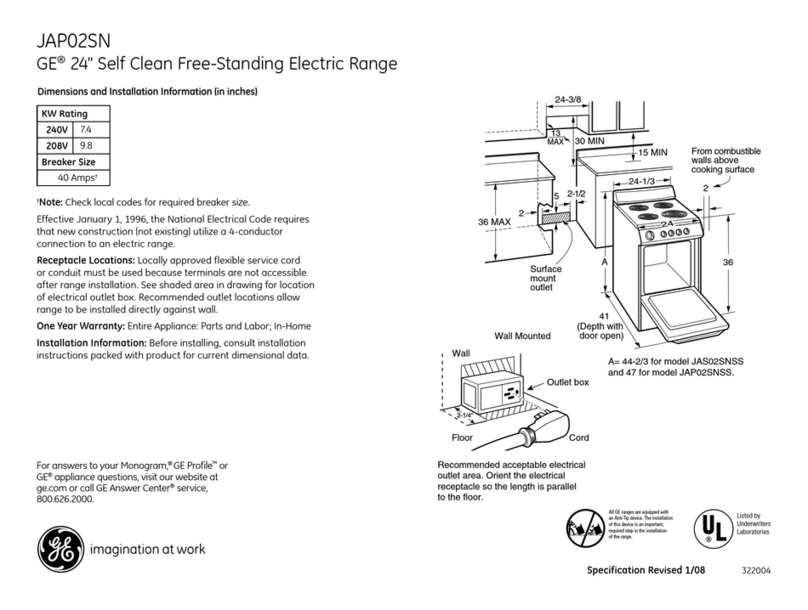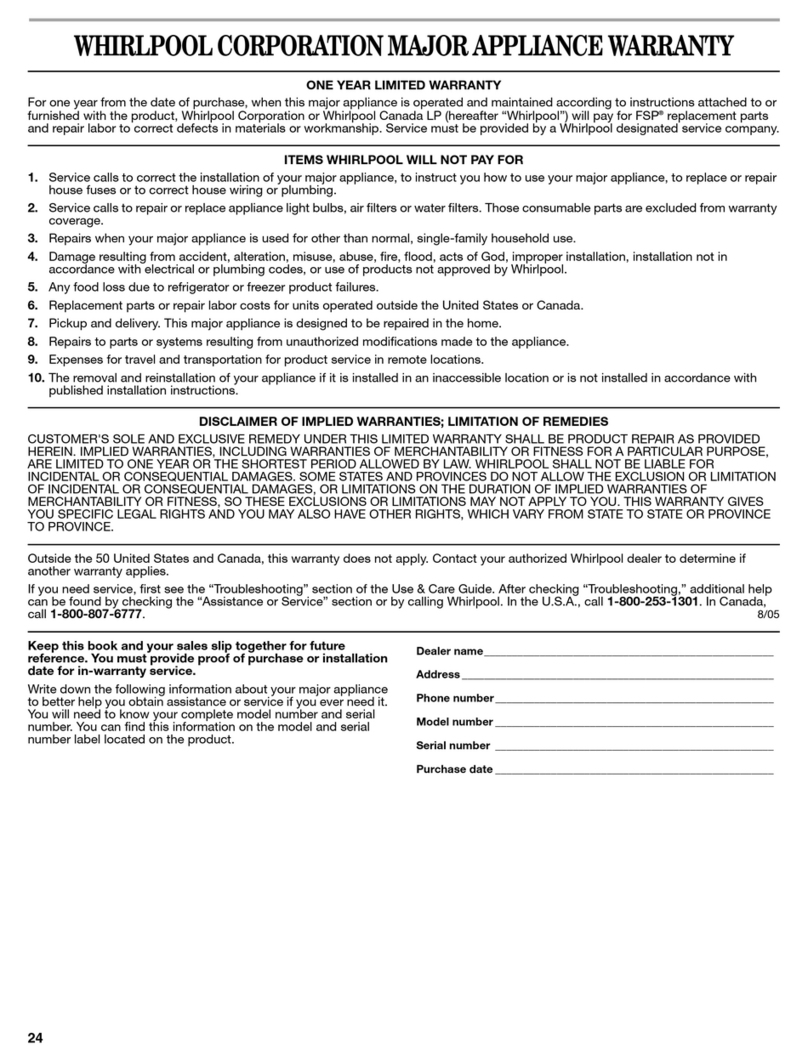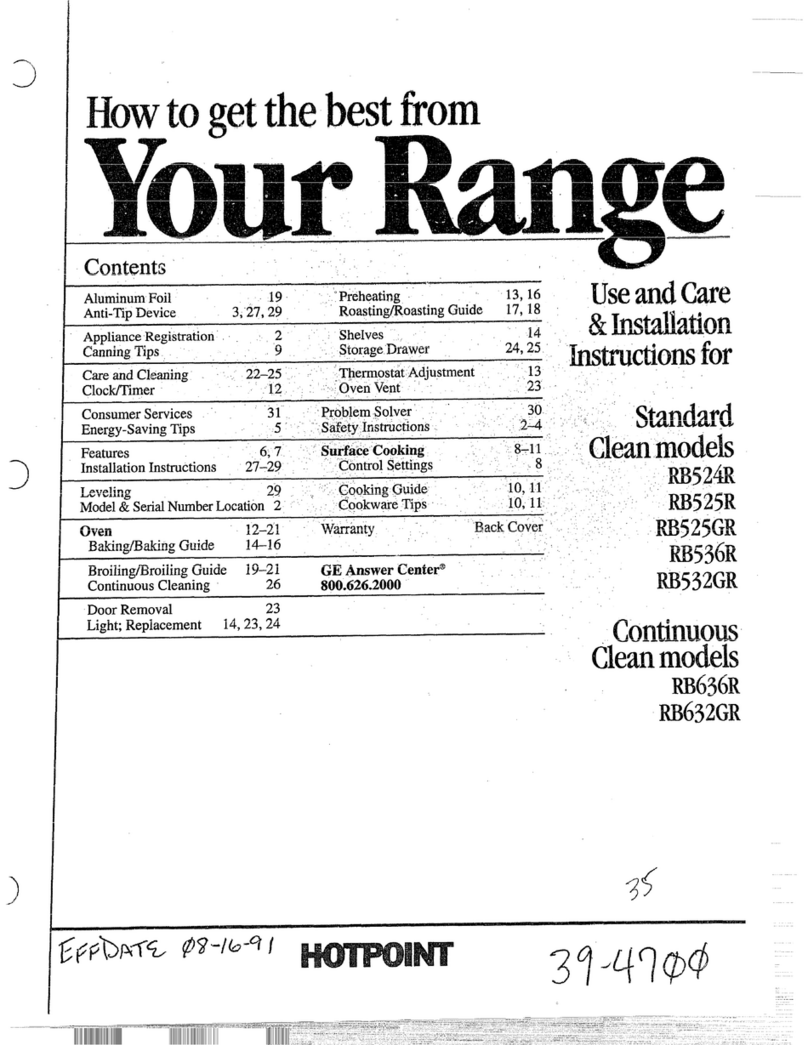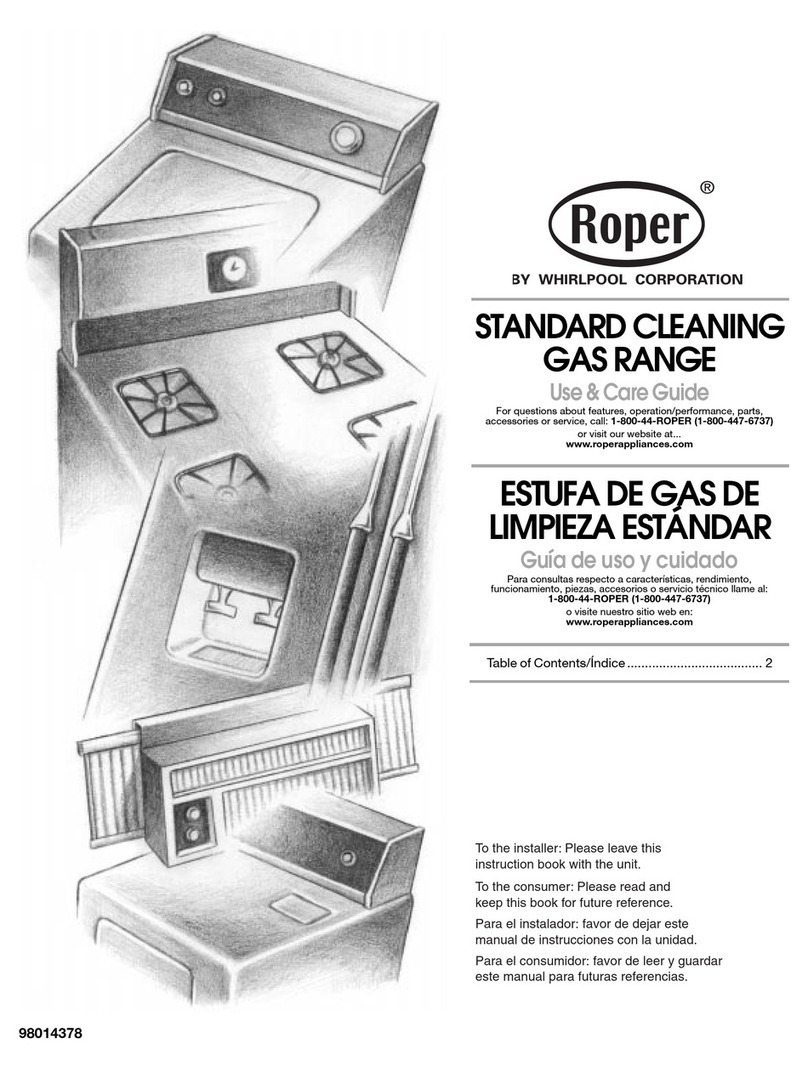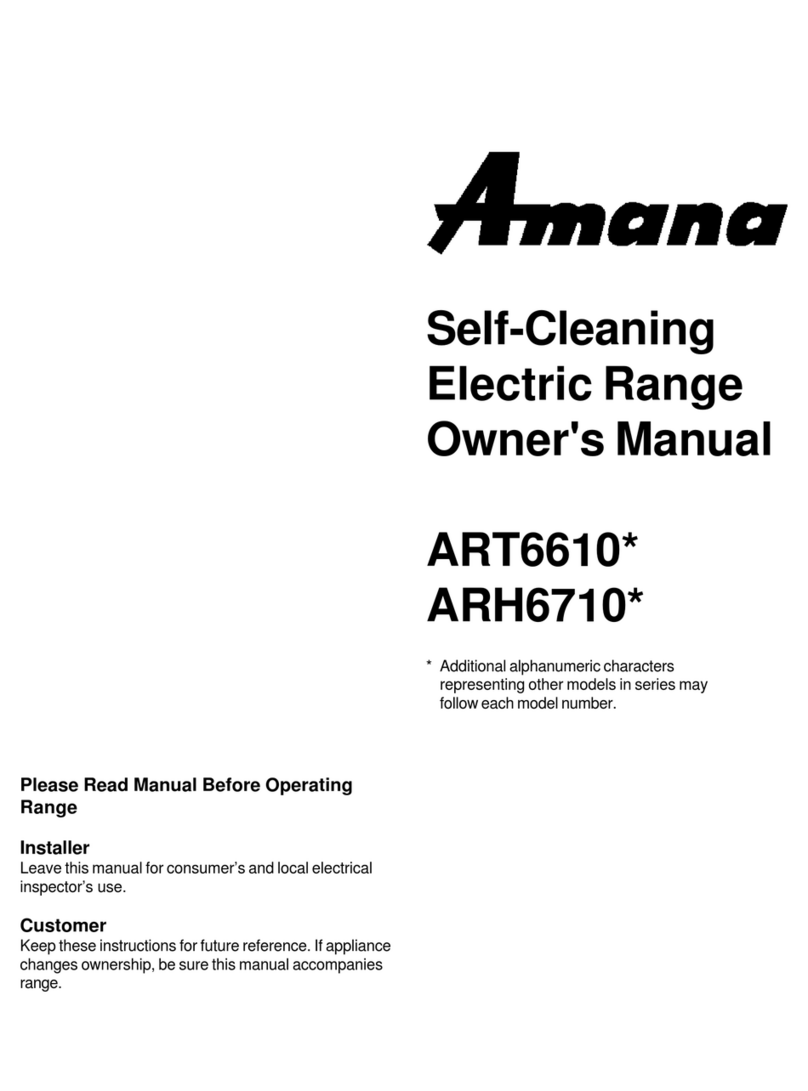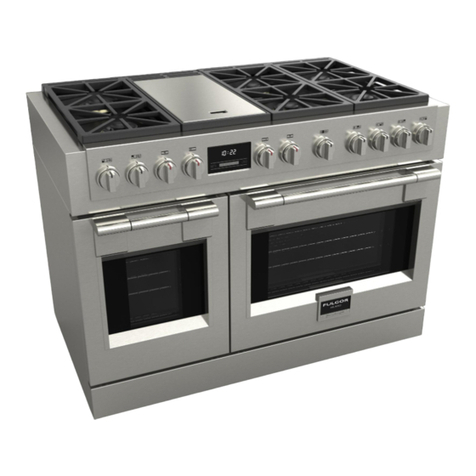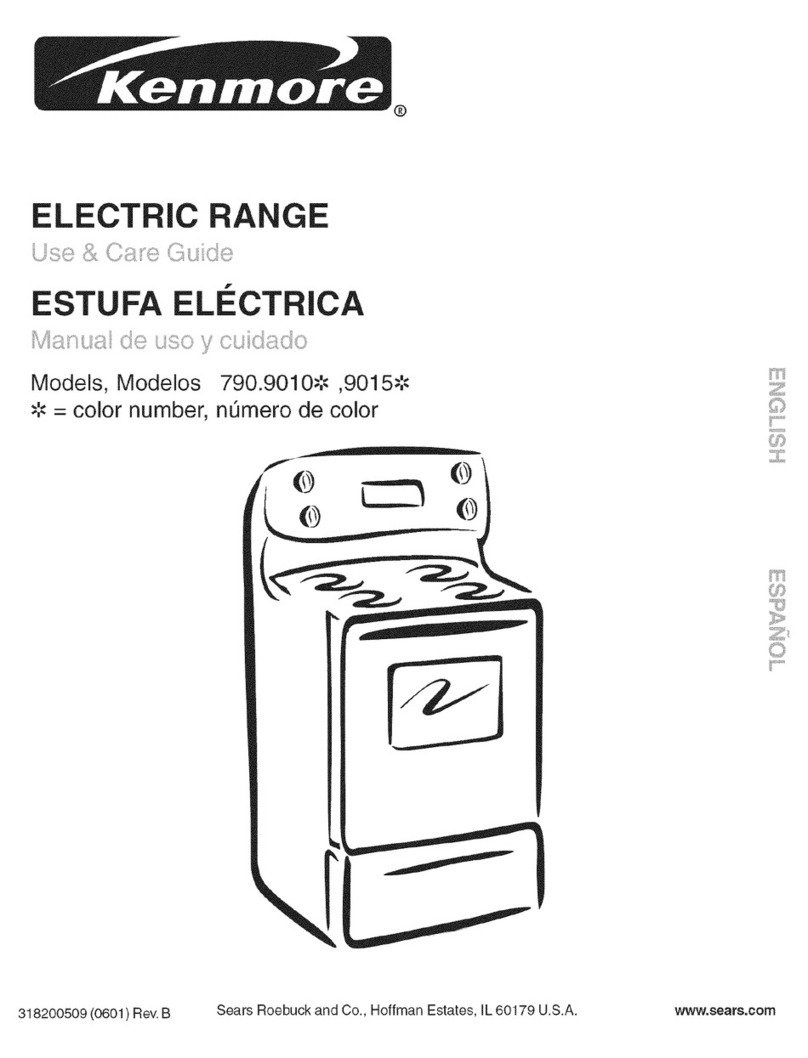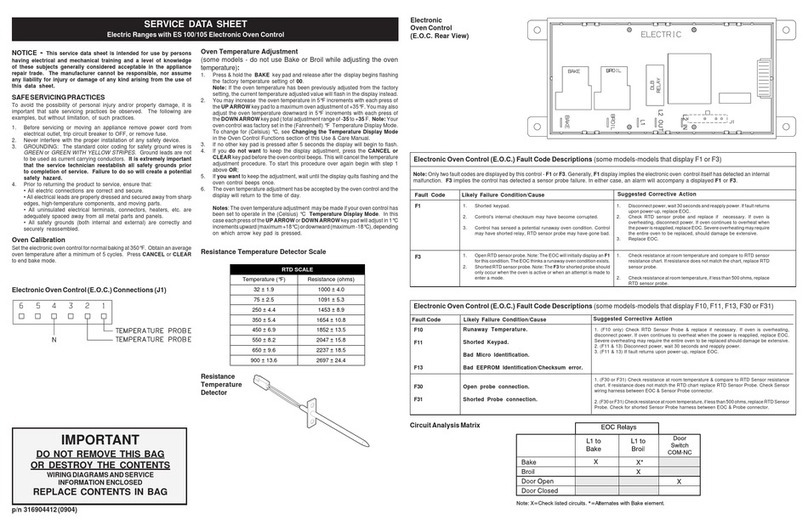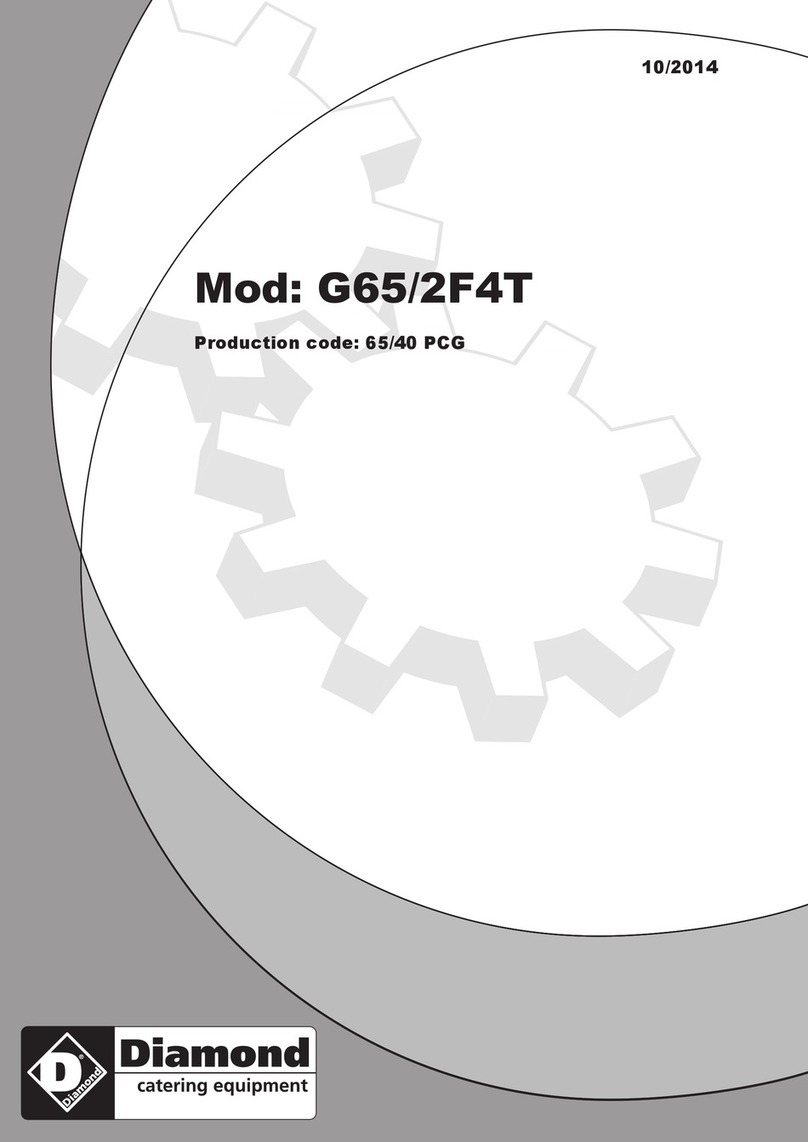
4
or near the cooktop, including paper, plastic, pot
holders, linens, wall coverings, curtains, drapes and
gasoline or other flammable vapors and liquids.
using the appliance. These garments may ignite if
they contact hot surfaces causing severe burns.
materials accumulate in or near the range. Grease
in the oven or on the cooktop may ignite.
not be allowed to accumulate on the hood or filter.
a flaming pan. Turn the controls off. Smother a
flaming pan on a surface unit by covering the pan
completely with a well-fitting lid, cookie sheet or flat
fire extinguisher.
the fire by closing the oven door and turning the
oven off or by using a multi-purpose dry chemical or
foam-type fire extinguisher.
the oven off and wait for the fire to go out.
force the door open. Introduction of fresh air at self-
clean temperatures may lead to a burst of flame
from the oven. Failure to follow this instruction may
result in severe burns.
or disconnect the power supply at the household
distribution panel by removing the fuse or switching
off the circuit breaker.
be left alone or unattended in an area where an
appliance is in use. They should never be allowed
to climb, sit or stand on any part of the appliance.
children above a range or on the backguard of a
items could be seriously injured.
holders on hot surfaces may result in burns from
other bulky cloth in place of pot holders.
the room.
or the interior surface of the oven. These surfaces
may be hot enough to burn even though they are
or let clothing or other flammable materials contact
the surface units, areas nearby the surface units or
any interior area of the oven; allow sufficient time
for cooling first. Other surfaces of the appliance
may become hot enough to cause burns. Potentially
hot surfaces include the cooktop, areas facing the
cooktop, oven vent opening, surfaces near the
opening and crevices around the oven door.
could build up and the container could burst,
causing an injury.
oven bottom or anywhere in the oven, except as
described in this manual. Oven liners can trap heat
or melt, resulting in damage to the product and risk
of shock, smoke or fire.
glass. Shock, fire or cuts may occur.
an internal temperature of 160°F and poultry to at
least an internal temperature of 180°F. Cooking
to these temperatures usually protects against
foodborne illness.


